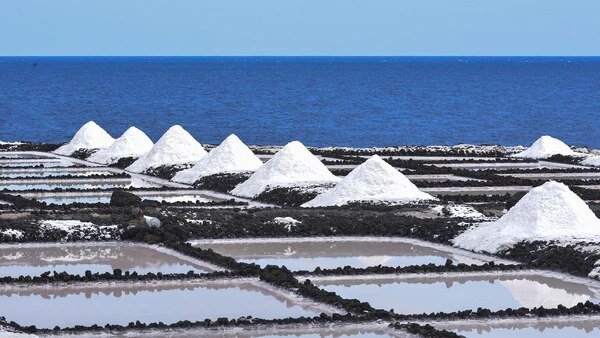Salt, scientifically known as sodium chloride, plays a vital role as a seasoning, preservative, and chemical compound, serving billions of individuals globally. From its culinary significance to its cultural references, salt holds a pivotal place in human existence.
But what is the journey that salt undertakes from its natural source to your table? The process of salt collection and manufacturing, encompassing various forms, proves to be more intricate than one might initially assume.
Unraveling the Origin of Salt

Salt, a mineral, predominantly originates from natural resources. The diverse methods used for producing distinct salt variations have evolved over time. The specific location and technique employed for salt production depend on the type of salt in question. Notably, the production of salt from brine is a prominent practice, with significant output recorded in states such as Kansas, Louisiana, Michigan, New York, Ohio, and Texas. Meanwhile, evaporation processing facilities, an integral part of salt production, are predominantly situated in Arizona, California, Nevada, New Mexico, Oklahoma, and Utah. In 2022, the United States generated a substantial 42 million tons of salt, amounting to approximately $2.5 billion in value, according to the U.S. Geological Survey’s Mineral Commodity Summaries.
The Global Landscape of Salt Export
In 2021, the United States secured the position of the eighth-largest global exporter of salt. Canada, China, Germany, Mexico, and Belgium emerged as the principal recipients of these exports, as documented by the Observatory of Economic Complexity.
Unveiling Salt-Making Techniques
Salt is produced through several common methodologies, including mining, evaporation of seawater or brines, and artificial heat application.
Mining:
The extraction of naturally occurring rock salt involves conventional excavation tools and techniques. This method ensures the highest level of salt purity, allowing producers to refine the harvested salt or distribute it as required. Typically, freshly mined salt clumps are crushed and ground into various sizes before undergoing sorting for distribution.
Evaporation:
Seawater and brines serve as prevalent sources of evaporated salt. Seawater is collected from the ocean, while brine, a highly concentrated saltwater solution, may naturally occur underground or within salt lakes. The process of evaporating seawater or brine varies based on climate and rainfall conditions in different countries.

The liquid is initially passed through wood filters to separate impurities such as sand, clay, and undissolved minerals. Subsequently, the filtered liquid undergoes crystallization in pans that lower its temperature to form ice, which separates from the salt. This process is repeated until only the solid mineral remains, which is then gathered and allowed to drain, resulting in sorted and distributed salt.
In essence, the journey of salt-making encompasses a fascinating interplay of natural resources, processes, and techniques that ultimately bring this essential mineral to tables across the world.
In conclusion
the journey of salt from its natural origins to our tables reveals a captivating interplay of processes, techniques, and global significance. As an essential mineral with culinary, preservative, and cultural importance, salt’s production methods have evolved over time. From the meticulous extraction of rock salt through mining to the intricate process of evaporating seawater and brines, the methods used reflect the adaptability of the industry to different climates and geographical conditions.
The extensive production of salt, with its myriad forms and applications, underscores its essential role in human life. Beyond its practical uses, the exploration of salt-making techniques offers insights into the intricate balance between nature’s resources and human ingenuity.
As we savor dishes seasoned with salt, it’s worth reflecting on the intricate journey this mineral takes – from deep within the earth’s deposits to the precise processes that transform it into the familiar seasoning on our tables. This journey is a testament to the intricate relationships between geography, science, and human needs, highlighting the significance of this unassuming yet essential compound in our lives.
Read more: https://truereviewmagazine.com/










